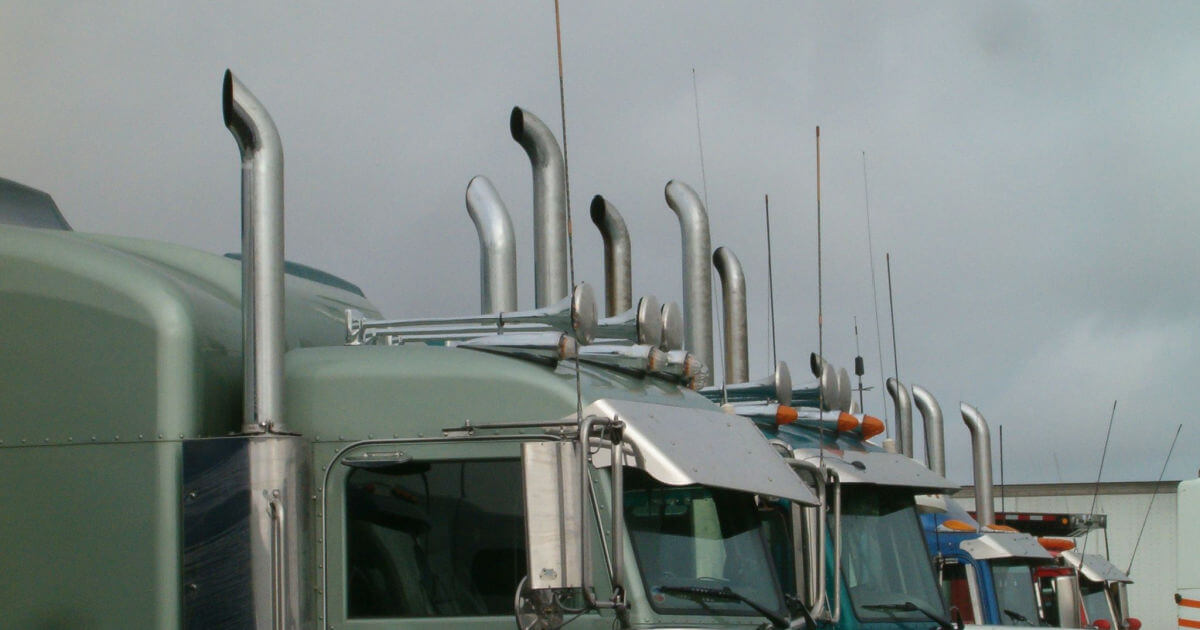
Recently announced changes to heavy-duty truck emissions standards have federal rule-makers taking a victory lap. But the Owner-Operator Independent Drivers Association (OOIDA) and other trucker advocacy organizations appear none too pleased, indicating more stringent regulations will have a chilling effect on small fleets.
Beginning no later than model year 2027, the Environmental Protection Agency’s (EPA), tighter standards are expected to result in pollution reductions that include reducing nitrogen oxide by 48 percent, benzene by 28 percent, volatile organic compounds by 23 percent, and carbon monoxide by 18 percent, by the year 2045. The EPA’s reasoning appears consistent with the policymaking initiatives at the U.S. Department of Transportation (DOT).
Both agencies focus on medium- and heavy-duty trucks because they emit approximately 26 percent of emissions while representing under 5 percent of vehicles, according to EPA data. Light-duty passenger vehicles are responsible for 57 percent of greenhouse gas emissions annually, based on the same EPA research.
“EPA is taking significant action to protect public health, especially the health of 72 million people living near truck freight routes in America, including our most vulnerable populations in historically overburdened communities,” EPA Administrator Michael S. Regan reportedly said. “But we’re not stopping there. This is just the first action under EPA’s Clean Trucks Plan to pave the way toward a zero-emission future.”
Although the EPA is primarily interested in fulfilling its clean-air mandate, trucking advocacy organizations such as the Owner-Operator association have expressed frustration. The exorbitant cost of a battery-electric Class 8 commercial motor vehicle appears to be a non-starter for many single-rig and small fleets.
“If small business truckers can’t afford the new, compliant trucks, they’re going to stay with older, less efficient trucks, or leave the industry entirely. Once again, EPA has largely ignored the warnings and concerns raised by truckers in this latest rule,” OOIDA President Todd Spencer reportedly said.
Exasperating the cost, recent reports indicate new models possess a limited capacity of 300 miles or fewer on a charge. Such issues are likely to strain a tight business model in which owner-operators need to watch every expense. The American Trucking Associations also weighed in with concerns about imposing the regulations.
“Since 1988, the trucking industry has cut [nitric oxide] emissions by more than 98 percent — demonstrating our commitment to protecting the environment. Continued progress on this front will depend on standards that are technologically feasible with equipment that is cost-permitting and reliable for fleets,” ATA President and CEO Chris Spear reportedly stated.
A statement from the Truck and Engine Manufacturers Association indicated “the rule is very stringent and will be challenging to implement.” The organization stated the success or failure of the EPA rules hinges on the ability of trucking fleets to purchase zero-emissions rigs.
Sources: supplychainquarterly.com, prnewswire.com,epa.gov











I think it was better when you did not have DEF fluid on a truck or bus. The engines running a lot better and cooler exhaust temperatures. A whole lot less problems back in the day when I would put K-1 kerosene in the running tank of the truck and no gelled fuel problems whatsoever . Fuel filter did not stop up either. But today you cannot do that. With all the electronics in the engine .